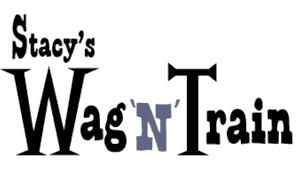Heading back to work in an office, after your Pandemic Puppy or long-time pet has gotten used to you working from home? This is for you!
A number of clients have contacted me recently saying that their lives have changed and their dog is getting less attention – and it’s showing in misbehavior. One client went back to working at her office after being on a medical disability; another started a new job – both of these women are spending more time commuting and thus have less time to focus on the dog. Another couple has been involved in various projects after taking a family trip that included the puppy. Another young man had a new semester start, with more challenging classes. And a number of us have been hit by a combination of seasonal colds, flus, or allergies (myself included!).

Their dogs are bored, or antsy, or lonely. And it’s showing up in various forms:
- Destructiveness (chewing, digging)
- Demanding attention (barking, pawing, whining at people)
- General “naughtiness” (stealing socks, shredding tissues, raiding trashcans, barking at squirrels)
What to do about it? Here are some ideas:
Ditch The Bowl
The easiest way to provide some extra mental stimulation and entertainment for a dog is to stop using a bowl to deliver a pile of food to your dog. Instead use food-dispensing toys, scatter programs, snuffle mats, etc. to make your dog food do double duty – nutrition and entertainment. See the Ditch The Bowl Training Tip for more information.
While you’re at it, make an assessment of your dog’s food to make sure that what your dog is eating is the right for your lifestyle. A dog who doesn’t do very much shouldn’t be eating the same food as a canine athlete. An adult dog shouldn’t be eating food formulated only for puppies. And no dog should be eating food with unnamed animal meal or byproducts, added sugars, added colors, or artificial preservatives. For a good primer on dog food, see the Whole Dog Journal.
Make the time with you count
Incorporate training into games. Play games like fetch and tug, but add training commands. Pause after a few moments and ask for “drop it” and give cues like “sit” or “down” (or shake, spin, play dead, whatever) just before you toss the ball or say “take it!” with the tug toy
Incorporate training into your walks. Ask for a “sit” at curbs and corners. Vary your speed of walking, sometimes going fast, sometimes going slow. Do quick direction changes (with a cue like “let’s go!”). Bring a longer leash to the park and let your dog sniff and explore – then practice “come”.
Take your dog along. If you have to run some short errands, consider taking your dog with you. This is assuming of course that your dog is comfortable in your car, can ride safely in it, and won’t be left in the car for long or in inappropriate conditions.
Schedule it. If your schedule is busy, actually put an appointment time in your calendar or phone. Remember that an activity that can be done at any time often doesn’t get done at all.
Outsource it
Hire a dog walker. If you can’t devote time to walking your dog, hire someone who can! Some dog walkers will take several dogs in a group, providing a lot of social interactions as well as physical activities. Others concentrate on just one dog – or one household’s dogs – at a time. Some will take dogs in their car to a park or hiking trail for a change of environment; others will stay in your familiar neighborhood. Whatever form you think works best for your dog, make sure the dog walker you hire is a professional, with knowledge of how to read and understand dog body language, how to use positive reinforcement to improve dog manners, how to deal with emergencies including dog first aid. While some professional dog walkers do use apps like “Wag” or “Rover”, you need to read the bios very carefully to see who you’re hiring. Look for various certifications like Pet First Aid or DogTec/Dog Biz certification. (I have a short list of dog walkers who I recommend in Silicon Valley here.)
Enroll in doggy daycare. If your dog is genuinely friendly with other dogs – that is to say, actually enjoys spending time with them (not just tolerating them), consider enrolling your dog in a local doggy daycare. Look for one that separates larger and smaller dogs, has a staff that is trained in understanding dog body language and how to reinforce good manners. You could send your dog there for a half day or a whole day; every day of the work week or just 1-3 days per week. If your dog is going to be at a daycare all day, look for one that provides downtime for the dogs by enforcing quiet hours or separates the dogs for a bit (usually during employee lunch time!). (I have a short list of doggy daycares that I recommend in Silicon Valley here.)
Set up a doggy playdate. If your dog already has doggy friends, see if you can invite one or them over to play together in your backyard or living room. Or see if the other dog’s owner is willing to host your dog!
All material copyright Stacy Braslau-Schneck.
Would you, your training company, or your club like to reprint this? Please be sure to keep my name, business name, and the website URL with the article, and if possible, please send me a copy. See the Contact Page for email and mailing address.

